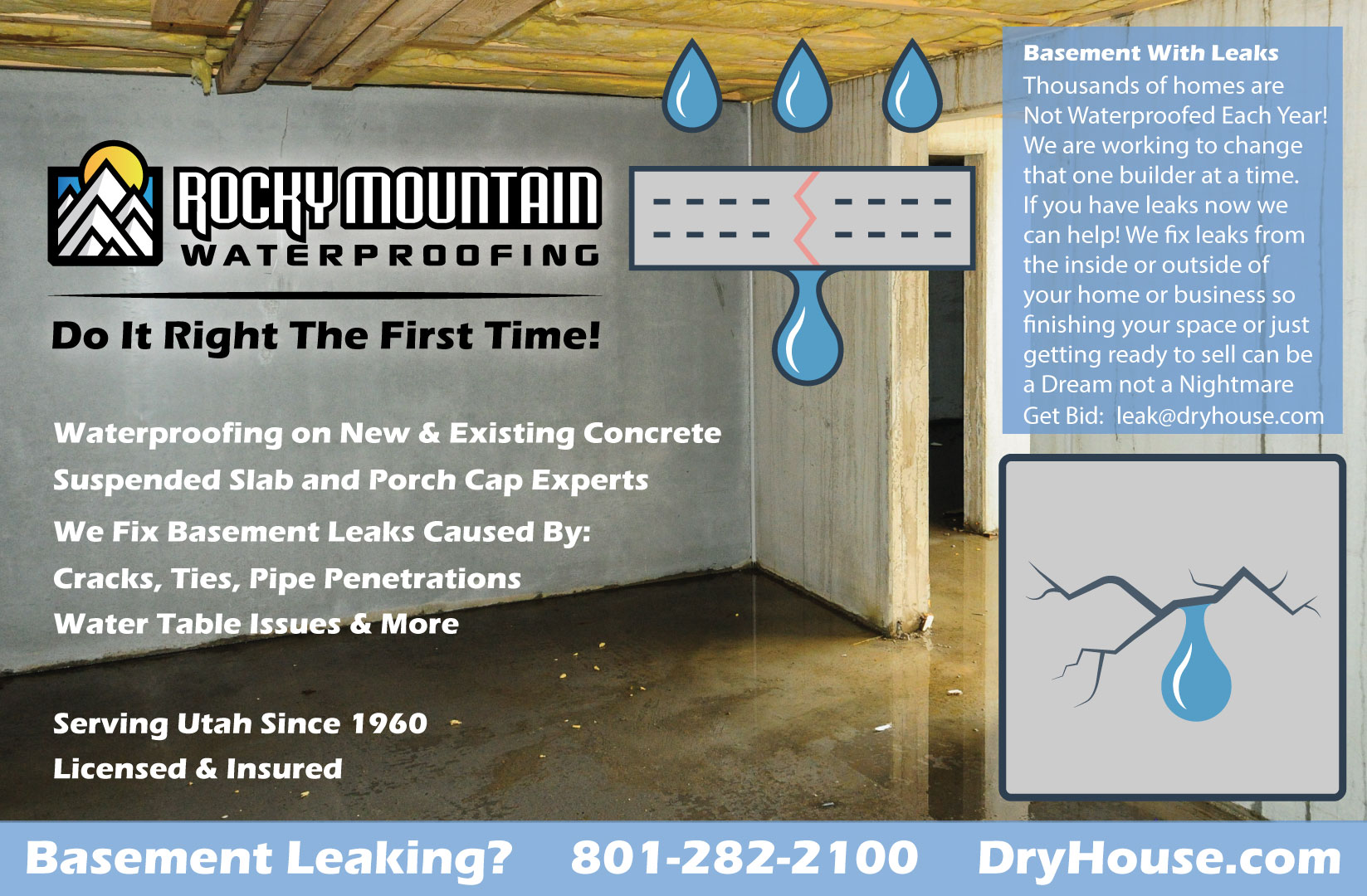Foundation Leak Problem Areas
Foundation Cracks
Foundations will crack and settle over time. Water entry occurs at cracks when water isn't managed properly from the exterior of the building.
Foundation Ties
Concrete, when formed, has ties to hold the forms in place. It is critical to have these removed and sealed before backfill.
Cold Joints / Cold Pours
Concrete, when poured in phases or with enough time separation, causes a joint similar to a crack to form. These joints are second most common leak source found in our area.
Honeycomb (Rock Pockets)
Concrete must be vibrated after placing in forms (but not overmixed in concrete truck). If concrete isn't mixed properly, it will cause void to form, easy access for water entry if not sealed correctly. Non-shrink grout and applying waterproofing can seal against leaks if caught before backfill, saving you from costly interior repairs
Floor Joints
High water tables and excessive water around home will cause floor joints to leak. Footing drains and standard building practices can help eliminate the risk of this being a leak area in your project.
Pipe Penetrations
Every project will have a penetration where a pipe such as the main water line enters into the building. Care must be taken to seal around pipes prior to backfill or at times before finishing areas around penetrations.
Water Table Issues
Ground water can occur wherever you build if given the right circumstances. High clay or solid rock can cause your foundation to act as a bathtub, holding water in the newly compacted soils surrounding your homes. Geo-technical reports can be vital to know how deep is safe for your project, and whether to install drainage systems or underslab waterproofing to keep your project safe and dry.
Leak Prevention
Sprinklers
Sprinklers should always be faced away from home when possible. Water from landscaping can cause basement leaks if they spray onto the foundation wall or put excessive amounts of water near the building, which will eventually cause settlement and possible foundation cracks.
Gutters and Downspouts
Gutters and Downspouts are important parts of your roofing system since they terminate and direct the water flow away from your project. But they need to extend at least 5-10' away from home to ensure long term protection from water.
Landscaping
Grade or slope away from your building is necessary for warranty requirements and makes good sense. Flat or negative slope toward the building can cause water to be routed toward finished areas and lead to costly repairs in not managed appropriately.

Footing Drains
Strip Drain
French drains were many people's only option a decade ago. But engineering and test has led to cutting edge technology in foundation drainage to save $$$ in labor and time. Strip drain is an ICC approved alternate and can move equal or more than typical footing drains. Check out size comparisons of standard systems with Strip drain and start saving today.
Foundation Wall Drains
Warm-N-Dri
This compressed fiberglass product has been install throughout the U.S. and helps keep home better protected. It also adds warranty to your system if installed with same manufacturer products by approved installers. It combines insulation and drainage to act similar to sand backfill. Water pressure will not be able to build up against the building with this products as long as there is a foundation drain to move water from the base of the foundation.
Thermal Drain
Synthetic fibers make this product more durable than standard insulation products against site conditions. It also drains, insulates, and add strength to your waterproofing application, as long as it is installed the same day. Being synthetic, it can handle some UV exposure without sacrificing performance. Better built product for better built homes.
Drainage Mat
Designed to meet and exceeds required gravel drainage on the most severe jobs. It can flow faster than gravel backfill (eliminating the need to bring in costly fill) and strong enough to work in extreme depths (up to 60' deep). It main purpose is to keep the water away from your structure and moving to a safe location for drainage.



